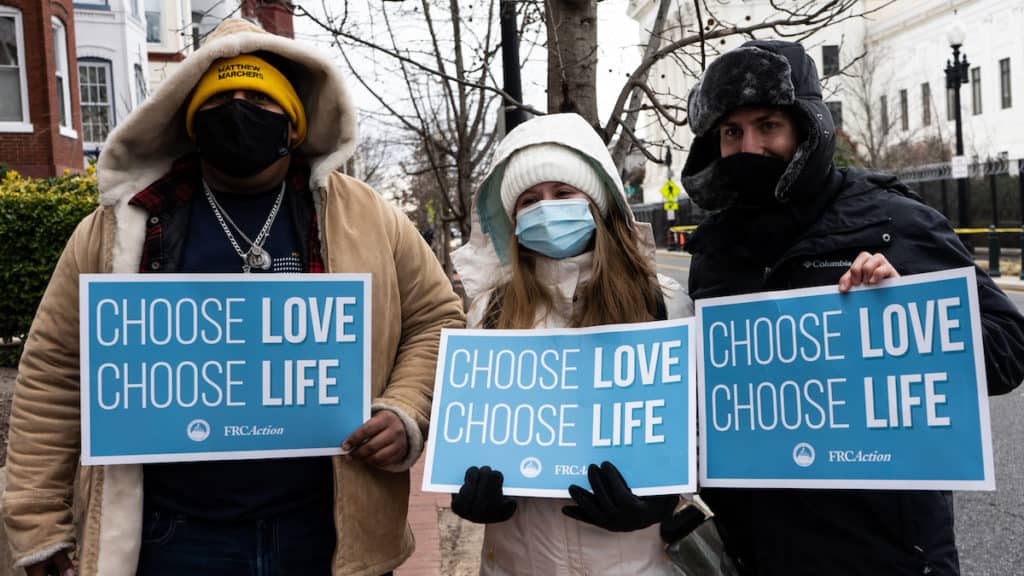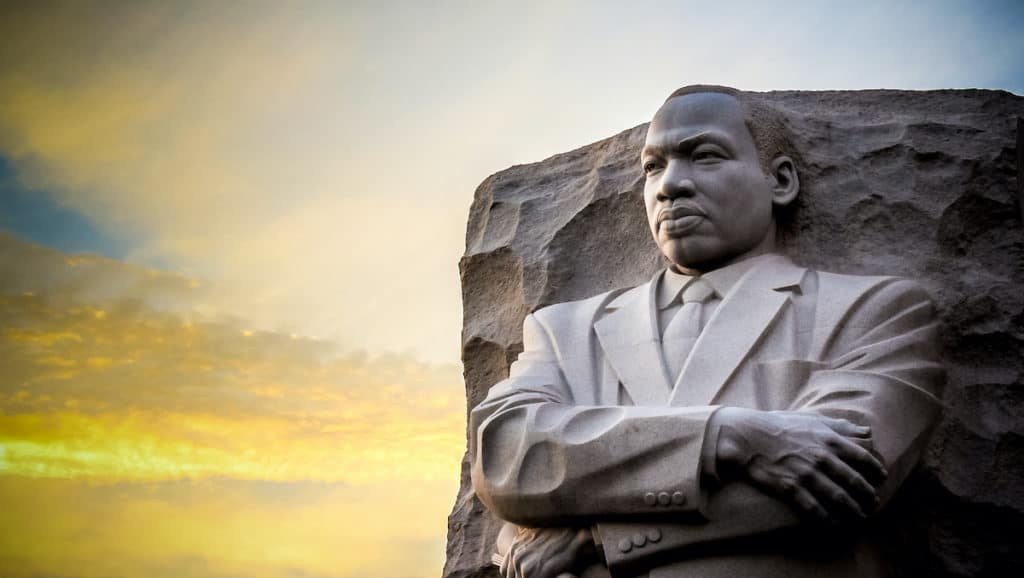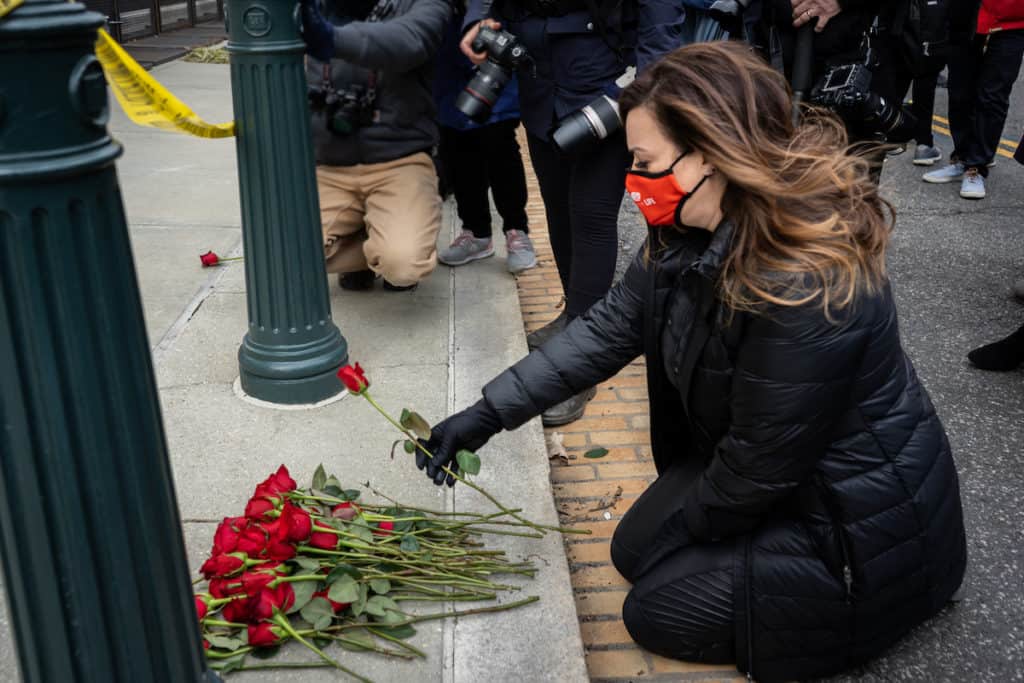Throughout history, differences in opinion have inspired individuals to exercise their right to peaceful protest. Unfortunately, the pop-culture definition of a peaceful protest has evolved alongside current events. If you’re like me, you’ve found yourself wondering, what does the right to peaceful protest really look like? Can a gentle protest be as impactful as a loud or violent one?

Sometimes, it seems like what constitutes a “peaceful protest” depends on which news media outlet you consult. Fortunately for U.S. Citizens, our country has established foundational documents that outline our rights as individuals.
When someone refers to the right to peaceful protest, most likely they are referring to the “right of the people to peaceably assemble,” stated in the First Amendment of the U.S. Constitution:
This amendment can be broken down into three simple statements:
Looking to the past, we find great examples of peaceful protests. We also see how impactful these assemblies were despite the violence and injustice against which they petitioned. Two of the largest and most long-lasting peaceful protests are the March on Washington, and the March for Life.
The most famous of peaceful protests is probably the 1963 March on Washington, (a.k.a. the March for Jobs and Freedom). On August 23, 1963, nearly 250,000 people met at the Lincoln Memorial in Washington, D.C., to rally against injustices rooted in racism. This peaceful assembly was landmarked by Martin Luther King Jr.’s iconic “I Have A Dream” speech.
The first March for Life (MFL) took place on January 22, 1974. This assembly was in response to the ruling of Roe v. Wade and Doe v. Bolton. Since then, the MFL has occurred every January. During this protest, marchers gather at the U.S Capitol to campaign for the right to life. The march begins approximately one mile from the Supreme Court and ends with participants placing red roses on the Supreme Court steps.
Peaceful assemblies help raise awareness and kick-start essential conversations where justice is lacking; However, these conversations are only are as productive as the actions that follow them.


Behind an effective peaceful assembly are individuals and establishments who are demonstrating the power of their proposed solution to heal what’s been broken by injustice.
Take for example, the awe-inspiring work of Daryl Davis, an African American musician who has convinced over 200 Ku Klux Klan members to give up their robes simply by befriending them.
Similarly, there are numerous Pregnancy Resource Centers across the United States that help provide abortion minded women with the pre-natal and post-natal support. There are also former abortionists and abortion survivors who bravely share their personal experiences alongside post-abortive healing resources.
The value behind a peaceful demonstration isn’t the buzz it creates, but the change it inspires. Done properly, peaceful protesting creates a moment of connection where one one group of humans say, “Help us! We’re hurting!” In response, those who hear have a chance to respond with, “We see you! We hear you! How can we help?”
But how can we know for sure that we’re exercising our freedoms in an effective way? When all else fails, compare your goals to those of Civil rights leader Martin Luther King Jr. Nearing conclusion of his famous speech, King gave his vision of a peaceful resolution for the injustices of his day.
Are you uniting with others to pursue equality and freedom, alongside peace and healing? Do your actions serve to both identify injustice and help heal the damage it has caused? Do you protest with hopes of, not only being heard, but of being able to hear others better? If so, then you’re probably on the right track.
The post What is the Right to Peaceful Protest? appeared first on Focus on the Family.
Continue reading...
What is the Right to Peaceful Protest?

Sometimes, it seems like what constitutes a “peaceful protest” depends on which news media outlet you consult. Fortunately for U.S. Citizens, our country has established foundational documents that outline our rights as individuals.
When someone refers to the right to peaceful protest, most likely they are referring to the “right of the people to peaceably assemble,” stated in the First Amendment of the U.S. Constitution:
“Congress shall make no law respecting an establishment of religion, or prohibiting the free exercise thereof; or abridging the freedom of speech, or of the press; or the right of the people peaceably to assemble, and to petition the Government for a redress of grievances.”
Constitution of the United States, First Amendment
This amendment can be broken down into three simple statements:
- The government will not promote one religion over another.
- The government will not curtail or lessen the freedom of speech and the press.
- Citizens have the right to peacefully gather, identify injustice, and advocate for solutions (a.k.a. protest).
Two Examples of Peaceful Protest
Looking to the past, we find great examples of peaceful protests. We also see how impactful these assemblies were despite the violence and injustice against which they petitioned. Two of the largest and most long-lasting peaceful protests are the March on Washington, and the March for Life.
The 1963 March on Washington
The most famous of peaceful protests is probably the 1963 March on Washington, (a.k.a. the March for Jobs and Freedom). On August 23, 1963, nearly 250,000 people met at the Lincoln Memorial in Washington, D.C., to rally against injustices rooted in racism. This peaceful assembly was landmarked by Martin Luther King Jr.’s iconic “I Have A Dream” speech.
The March for Life
The first March for Life (MFL) took place on January 22, 1974. This assembly was in response to the ruling of Roe v. Wade and Doe v. Bolton. Since then, the MFL has occurred every January. During this protest, marchers gather at the U.S Capitol to campaign for the right to life. The march begins approximately one mile from the Supreme Court and ends with participants placing red roses on the Supreme Court steps.
The March for Life 2021 Recap
Can Peace Really Bring About Change?
Peaceful assemblies help raise awareness and kick-start essential conversations where justice is lacking; However, these conversations are only are as productive as the actions that follow them.


Behind an effective peaceful assembly are individuals and establishments who are demonstrating the power of their proposed solution to heal what’s been broken by injustice.
Take for example, the awe-inspiring work of Daryl Davis, an African American musician who has convinced over 200 Ku Klux Klan members to give up their robes simply by befriending them.
Similarly, there are numerous Pregnancy Resource Centers across the United States that help provide abortion minded women with the pre-natal and post-natal support. There are also former abortionists and abortion survivors who bravely share their personal experiences alongside post-abortive healing resources.
The value behind a peaceful demonstration isn’t the buzz it creates, but the change it inspires. Done properly, peaceful protesting creates a moment of connection where one one group of humans say, “Help us! We’re hurting!” In response, those who hear have a chance to respond with, “We see you! We hear you! How can we help?”
Tips for Taking Action Locally
- How to Join The Pro-Life Movement
- Abortion Access: 5 Actions for Pro-lifers to Weaken Roe v. Wade
- How to Respond to Unexpected Pregnancy
Are we doing this right?
But how can we know for sure that we’re exercising our freedoms in an effective way? When all else fails, compare your goals to those of Civil rights leader Martin Luther King Jr. Nearing conclusion of his famous speech, King gave his vision of a peaceful resolution for the injustices of his day.
“And so even though we face the difficulties of today and tomorrow, I still have a dream …. we will be able to speed up that day when all God’s children, Black men and white men, Jews and Gentiles, Protestants and Catholics, will be able to join hands and sing in the words of the old Negro spiritual, ‘Free at last! Free at last! Thank God Almighty, we are free at last!'”
Martin Luther King Jr.
Are you uniting with others to pursue equality and freedom, alongside peace and healing? Do your actions serve to both identify injustice and help heal the damage it has caused? Do you protest with hopes of, not only being heard, but of being able to hear others better? If so, then you’re probably on the right track.
The post What is the Right to Peaceful Protest? appeared first on Focus on the Family.
Continue reading...